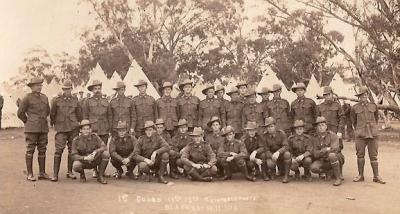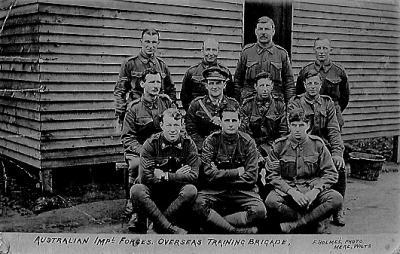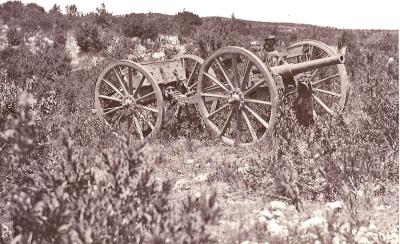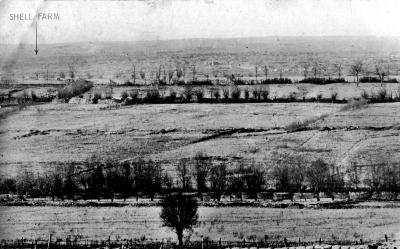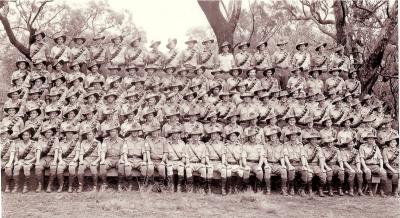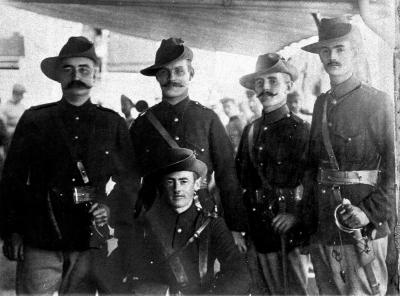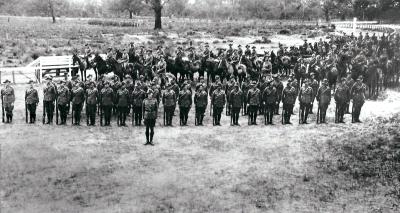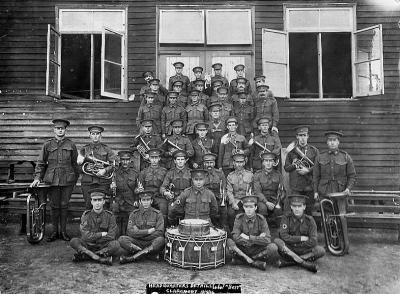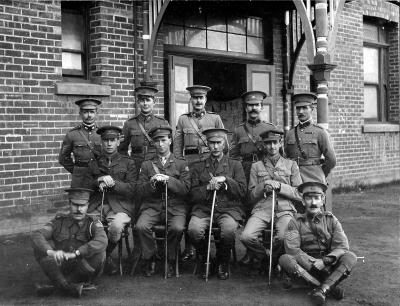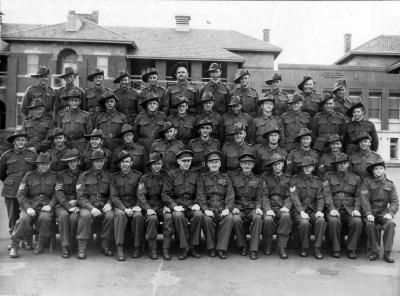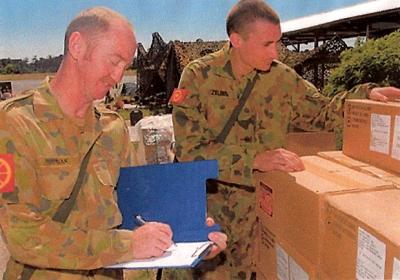World War 1, Western Australia, 3366 EAGLETON, 12 Battalion
Private Albert Henry EAGLETON (3366). Joined 2/8/1915 and allocated to 11th Reinforcements, 12th Battalion on 29/10/1915. Taken on strength of 52nd Battalion from 12th Battalion 3/3/1916. Killed in Action 11/8/1916. Buried at Long Dr.ive Valley Cemetery, Albert, France by Chaplin W DEVINE, attached to the 12th Battalion. Copy
The 12th Battalion was among the first infantry units raised for the AIF during World War 1. Half of the battalion was recruited in Tasmania, a quarter was recruited in South Australia, and a quarter from Western Australia. With the 9th, 10th and 11th Battalions it formed the 3rd Brigade.
The battalion was raised within three weeks of the declaration of war in August 1914 and embarked just two months later arriving in Egypt in early December. The 3rd Brigade was the covering force for the ANZAC landing on 25 April 1915 and so was the first ashore at around 4:30 am. The battalion's commanding officer, Lieutenant Colonel Lancelot Fox Clarkewas killed and Captain Joseph Lalor leading the WA Company assumed command only to be killed himself later in the day. Subsequently, he battalion was heavily involved in establishing and defending the front line of the ANZAC position, and in August contributed two companies to the attack on Lone Pine. The 12th served at ANZAC until the evacuation in December.
After the withdrawal from Gallipoli, the 12th Battalion returned to Egypt and, in March 1916, sailed for France and the Western Front. From then until 1918 the battalion took part in bitter trench warfare. The battalion's first major action in France was at Pozieres in the Somme valley in July 1916. After Pozieres, the battalion fought at Ypres in Flanders and then returned to the Somme for winter.
In 1917 the battalion took part in the brief advance that followed the German Army's retreat to the Hindenburg LineThe battalion subsequently returned to Belgium to participate in the offensive that became known as the Third Battle of Ypres.
In March and April 1918 the battalion helped to stop the German spring offensive, and later participated in the great allied offensive of 1918, fighting near Amiens on 8 August 1918. Described by German General Erich Ludendorff as "the black day of the German Army in this war".
The battalion continued operations until late September 1918.. After the Armistice of 11 November 1918, the members of the AIF began to return to Australia for demobilisation and discharge.
Details
Details
P2006.119.1a
AHMS IRN 32349
Australian Army Museum of Western Australia
Australian Army Museum of Western Australia
Other items from Australian Army Museum of Western Australia
- World War 1, Western Australia, Blackboy Hill, EAGLETON, 12 Battalion,1915
- World War 1, Wiltshire, England, JUNNER
- Post 1945, Perth, Western Australia, Australia, MASON, Royal Australian Army Nursing Corp, 1953
- Pre 1914, 2nd Anglo Boer War, South Africa, 15 Pounder
- World War 1, Messines, France ,1917
- World War 2, Western Australia, B Squadron, 10 Light Horse, 1944
- Pre 1914, 2nd Anglo Boer War, MCWILLIAMS, CAMPBELL, PARKER, DARLING , MOOR , First West Australian Mounted Infantry Contingent, 1899
- World War 1, Western Australia, Helena Vale Racecourse, MCADAM, 28 Battery Australian Field Artillery, 1914
- World War 1, Western Australia, Claremont, 44 Battalion, 1916
- Pre 1914, Western Australia, Claremont, No 10 Non-Commissioned Officer School
- World War 2, Fremantle, Artillery barracks,No 1 Harbour Battery, Volunteer Defence Corps, 1945
- Post 1970, ZELE, DUDMAN
